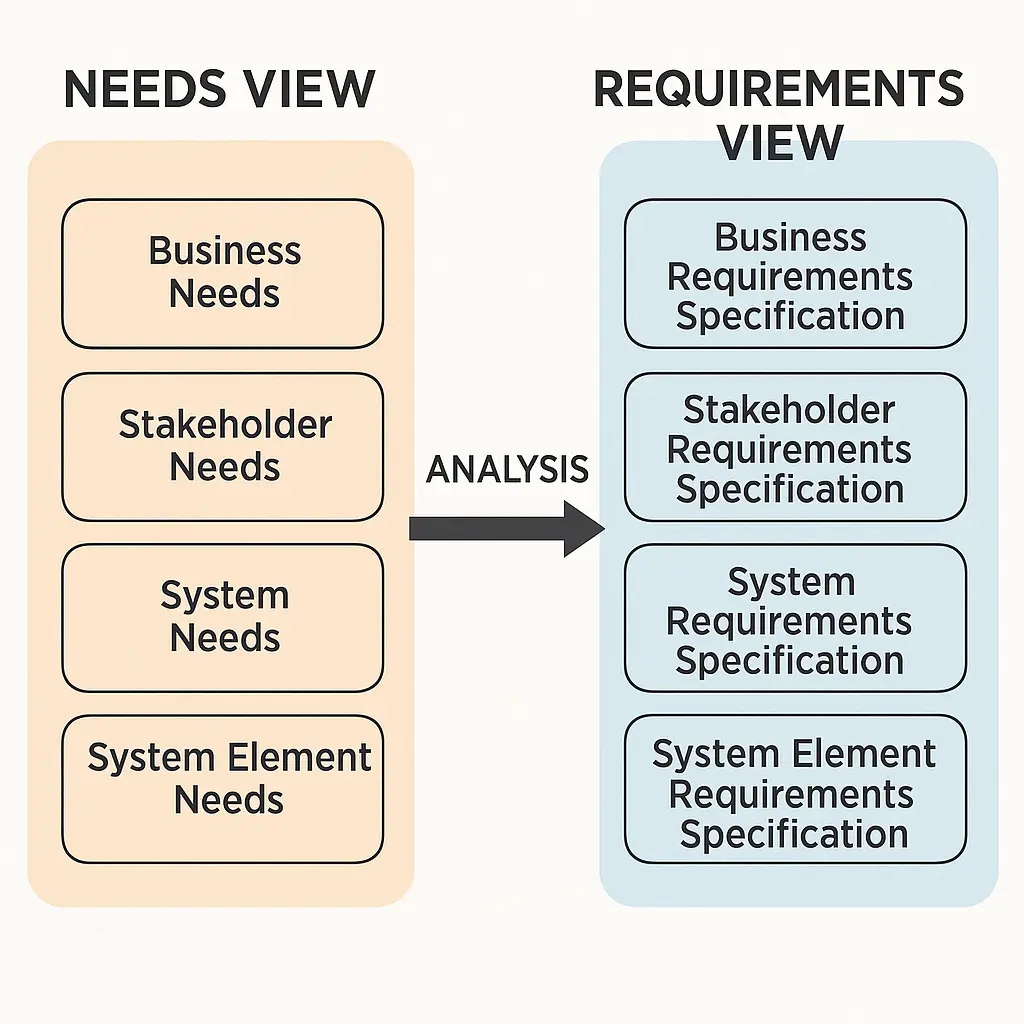Common Challenges
Managing product requirements over time is rarely straightforward. As development progresses, requirements often change, grow, or become obsolete. Some are revised as technical constraints become clear, others evolve based on new user feedback, and occasionally, certain requirements are dropped altogether. Without a structured process, it becomes difficult to track what is still relevant, and this leads to missed targets or unnecessary rework.
A frequent issue is the poor transformation of stakeholder needs into system-level requirements. Stakeholders often express what they want in broad terms, while engineers need specifics to build from. When this bridge is weak, teams risk implementing features that technically meet a description but fail to serve the actual purpose.
Another challenge lies in maintaining traceability. When the link between a requirement and its original business or stakeholder intent is lost, it becomes harder to justify decisions or explain changes. This affects both internal team communication and external accountability.
Lastly, poorly structured requirements documents create confusion. Gaps between sections, overlapping definitions, and unclear ownership lead to ambiguity. Reviews slow down, responsibilities blur, and the team spends more time interpreting documents than using them. Proper structure and maintenance are key to making requirements work for the product team, not against it.
Our Approach
Requirements Management is not something we can carry out independently. It demands close, sustained collaboration by your business and engineering teams with ours. These teams are the source of the needs. Our role is to act as translators—taking the needs and guiding them through a structured process that turns them into clear, testable, and maintainable requirements. This approach provides clarity on what to expect, when to engage, and how each step contributes to the next. Once this shared foundation is in place, we categorize our work into four structured activities that run throughout the product lifecycle:
Preparing for requirements definition: This includes defining requirement types, setting up the documentation structure, and identifying source materials.
Defining requirements: We guide teams in capturing and documenting each type of requirement clearly and systematically.
Analyzing requirements: We support reviewing the requirements for clarity, feasibility, consistency, and completeness to ensure they are suitable for use.
Managing requirements: We help maintain version control, traceability, and change handling through structured templates or tools.
While the four activity categories above span the entire lifecycle of product requirements, they are applied within distinct specification processes. Clients may choose to engage with us on any one or more of these processes, depending on their product development needs. We assist in structuring and supporting the following specification processes:
The Business Requirements Specification (BRS) outlines high-level business goals and context. We help clients articulate what the product should enable or solve from a strategic perspective.
The Stakeholder Requirements Specification (StRS) captures the expectations and needs of all relevant stakeholders. We ensure that these are complete, conflict-resolved, and ready to shape the system view.
The System Requirements Specification (SyRS) translates stakeholder inputs into a technical interpretation. This document becomes the anchor for architecture and design efforts.
The System Element Requirements Specification (SeRS) breaks the system down into individual components, assigning responsibilities and detailing specific interfaces or constraints. We help maintain consistency with higher-level documents while supporting modular development.
What to Expect
Clients can expect tangible outcomes in the form of well-structured and consistently maintained requirement specification documents tailored to the product and its development phase. These documents serve as more than formalities. They create accountability by making it possible to test and accept deliverables from both internal teams and external suppliers. By keeping the view of all requirements up to date and aligned with actual development cycles, we ensure that engineering activities are always rooted in current, validated information. Consistent formatting, clear naming, and thoughtful cross-referencing help avoid confusion and make review and handoff processes smoother across teams and departments.
Service Dependencies
This service draws directly from Stakeholder Needs Management, which lays the groundwork for understanding what matters and why. Without that foundation, requirements risk being disconnected from real use. Once in place, requirements management becomes a critical input for System Architecture Definition, guiding technical design based on validated needs. Later, the same structure supports Verification and Validation planning, offering traceability between what was originally asked and what must be tested. Throughout the product lifecycle, these well-managed requirements also anchor change management and integration coordination, helping teams track the impact of decisions and maintain alignment as complexity increases.
